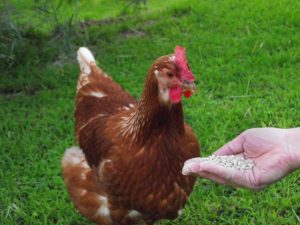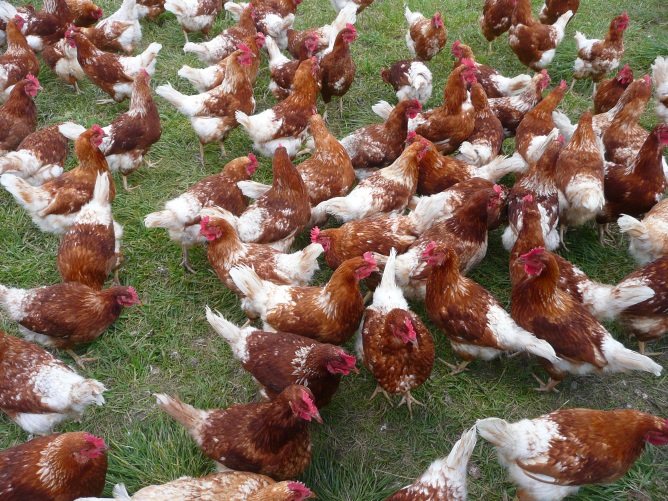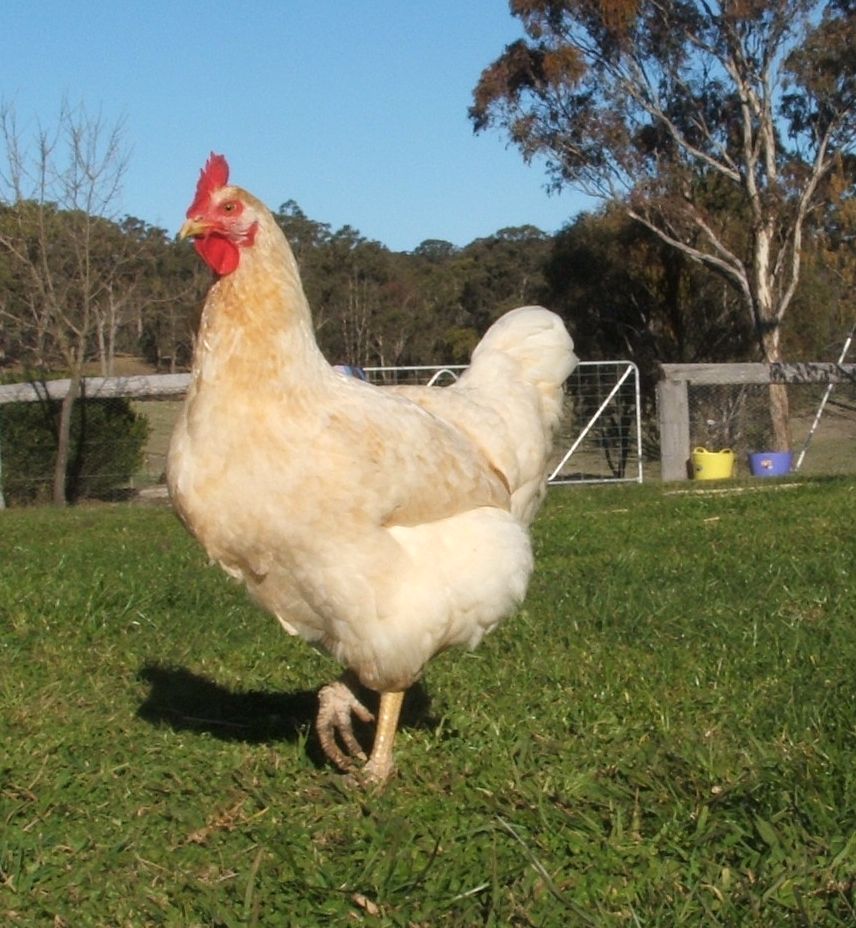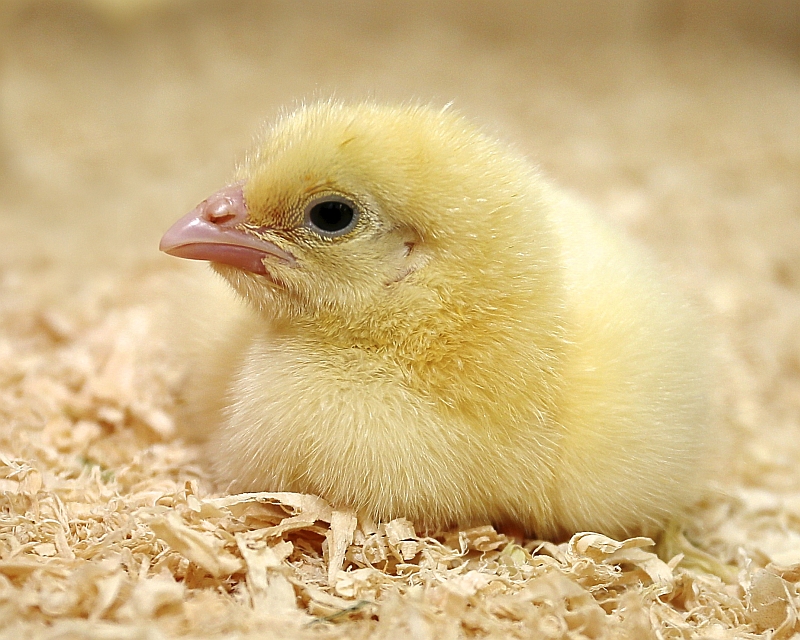Backyard Poultry
Raising backyard poultry
Choosing Backyard Chicken Breeds
Many chicken breeds are perfectly suited for backyard flocks. Choosing the right breed for your backyard flock solely depends on the poultry keeper’s needs. Chicken breeds can be divided into two basic categories: birds for meat and birds for eggs. Also, certain chicken breeds can boast milder temperaments, which are typically better suited for families with small children who would interact with the birds.
For choosing a chicken breed for your backyard flock, the poultry experts at Smallholder Magazine advise the following:
“All breeds and types of hen produce nutritionally the same eggs, either smaller in the case of bantams or larger for certain breeds. Whether they are white, brown, khaki or blue, it makes no difference to the nutritional contents. Some pure breeds lay better than others and within the pure breed, there are so-called ‘laying strains’ that produce more eggs than other birds of that breed. For sheer reliability on laying eggs, choose hybrids. There are some delightful back yard hybrids now such as the attractive ‘Bluebell’ and the ‘Speckled’ that lays light brown eggs but I’ve kept both hybrids and purebreds for years and both types of bird have delightful personalities.” [1]
To find more information on breeds and to find information on breeders and hatcheries, refer to a Poultry Association in your area. Alternatively, there is a wealth of excellent resources on the web, such as this page on UK standardised breeds on poultrykeeper.com.
To find a breed, contact a hatchery within your country or region. As an alternative to buying eggs and adult birds from a hatchery, eggs or birds can be purchased directly from poultry keepers. Often smallholders trade and sell chickens after laying season. To find birds for trade or sale, refer to poultry classifieds websites.
Hatching and Incubating Eggs
In order for eggs to hatch, they must stay at a constant temperature. The optimal temperature for chicken eggs is 102°F (38°C). Humidity is also essential for an egg to hatch. Chicken eggs are typically kept at 58-60% humidity for the first 18 days. During the last days of incubation, chicken eggs usually sit in 65% humidity. [2] That constant temperature can be provided by natural incubation via a brooding hen or artificial incubation via an incubator. The incubation of chicken eggs takes about 21 days. [3]
Brooding Hens
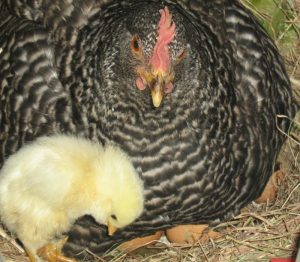
Brooding is the act of a hen sitting on eggs to incubate them. At a certain age, hens begin to exhibit brooding behaviour. Certain chicken breeds exhibit broodier behaviour than other breeds—these birds are often categorised as meat birds. Strong brooding behaviour has been bred out of chicken breeds that are classified as egg-laying breeds.
On average, hens lay about ten eggs before beginning to brood. [4] Once the brooding behaviour begins, all eggs begin to incubate at the same time
and are able to complete the incubation period at the same. This is the reason why eggs, though laid at different times, hatch around the same time.
To facilitate brooding behaviour, poultry keepers often separate the brooding hens from the rest of the hens. Brooding hens are often kept in brooders, which offer more comfort and peace.
When hens begin to brood they sit for long periods only taking breaks to eat and drink, they cluck when moved, they take others’ eggs and inanimate objects to sit on.
Incubating
Humidity, constant heat, and turning are required to artificially incubate eggs. Before being put into an incubator, eggs can be kept up to seven days in a cool, humid environment. Before inserting eggs into an incubator, they should be warmed to room temperature gradually. “Abrupt warming from 55 degrees to 100 degrees [Fahrenheit] causes moisture condensation on the egg shell that leads to disease and reduced hatches,” says Dr. Tom W. Smith, Emeritus Professor of Poultry Science at Mississippi State University. [5]
Eggs can be incubated without an electric incubator. However manually maintaining the humidity and temperature can be difficult, while electric incubators accurately control humidity and temperature.

To produce healthy chicks, Dr. Tom W. Smith advises the following:
“Avoid excessively large or small eggs. Large eggs hatch poorly and small eggs produce small chicks. Avoid eggs with cracked or thin shells. These eggs have difficulty retaining moisture needed for proper chick development. Penetration of disease organisms increases in cracked eggs. […] Slightly soiled eggs can be used for hatching purposes without causing hatching problems, but dirty eggs should not be saved. Do not wash dirty eggs.” Washing dirty eggs or rubbing with a cloth allows the introduction of bacteria and diseases into the egg’s fine porous shell. [6]
Eggs should be turned about 3-5 times a day. Inadequate turning can lead to misshapen chicks as the embryo could stick to the side of an egg. To help keep track of turning, eggs can be pencil-marked with an X on one end, and an O on the other.
Improving Laying
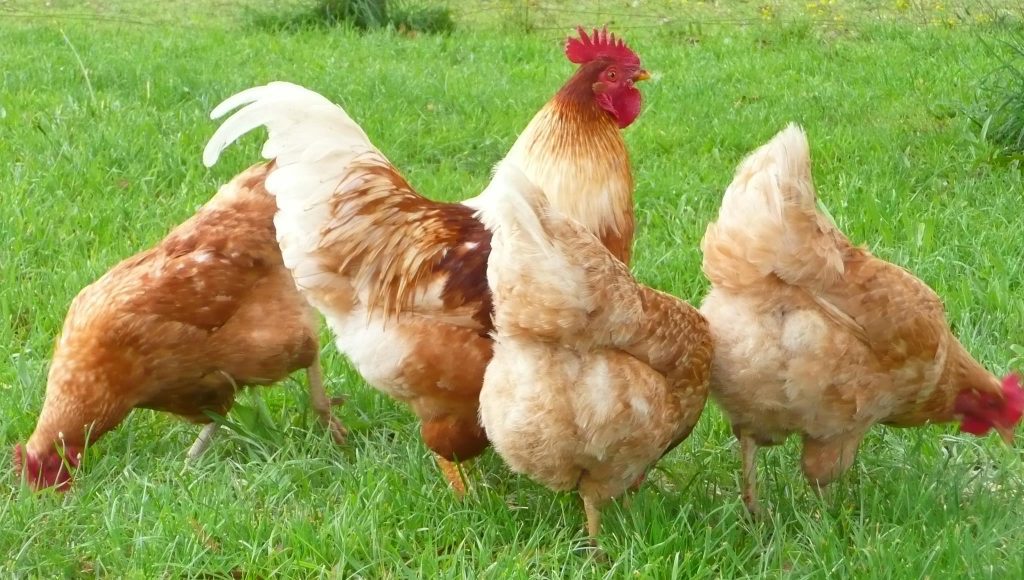
Isa Brown chickens are popular with backyard owners due to their high number of eggs
The bird’s age, breed, and moulting period determine its ability to lay eggs. Certain chicken breeds were bred to reduce the demonstration of brooding behaviour and increase laying. If a poultry keeper wants to keep chicken for eggs, it is important to choose a chicken breed that demonstrates high levels of egg production.
To increase egg production, brooding behaviour must be reduced. When an egg-laying hen demonstrates brooding behaviour, the hen can be separated from the rest of the flock and placed in henhouse without a nest. In this way, sitting on a nest is discouraged.
Poultry scientist Dan L. Cunningham at the University of Georgia says that “Removing the hens from visual and physical stimulation provided by nest and nesting material will help discourage this behaviour. In addition, it will help prevent producing hens from observing and adopting the broody behaviour of their flock mates. The hens should be held in this isolation pen for seven to 10 days before moving them back to the laying pen.” [7]
Longer days, or extended periods of light, encourage egg-laying. Hens naturally lay more eggs during seasons with longer days. As the days shorten, hens begin to demonstrate broodier behaviour. During these shorter days, after the natural breeding season, chickens begin to moult their feathers. Since moulting requires a lot of energy, chickens decrease their egg production. To maintain normal egg production, chickens require around 12-14 hours of light, which can be provided artificially when days naturally become shorter. [8]
A pullet (a female chicken less than one-year-old) which is chosen to become an egg-laying hen should have a diet that consists of 12-16% protein. Adult egg-laying hens should have a diet high in calcium and minerals. [9] Nutritional diseases can occur in egg-laying hens if they aren’t provided with an adequate diet. Poultry scientist Claudia Dunkley at the University of Georgia says that “rickets, CLF [cage layer fatigue], and FLS [fatty liver syndrome] are nutritional diseases that affect laying hens and can account for a high percentage of the flock mortality. The laying hens’ diet is specifically formulated to be nutritionally complete, however, the occurrences of these diseases are prevalent especially in hens in high production and the mortality rate in flocks can be high.” [10]
Housing Backyard Chickens
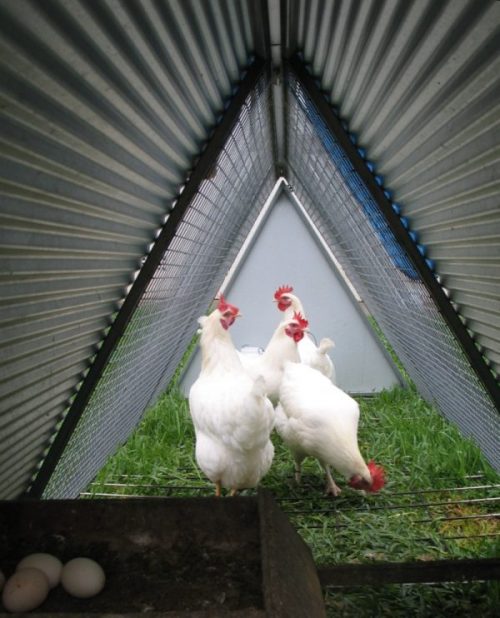
A light-weight A-frame run is a portable option for a small number of birds.
Poultry expert and author Jeremy Hobson says, “If you intend to keep your chickens intensively, a house measuring 1.5 m x 2 m (5 ft x 7 ft) should be sufficient for six hens; if a run is attached it will accommodate 12 birds. For these sorts of numbers, a combined house and run area of 5 sq m (6 sq yd) per bird is adequate, although much will depend on whether you are keeping bantams, light large fowl or any of the extremely heavy breeds as Croad Langshans or Brahmas.” [11]The size of backyard housing for chickens depends on the method in which they are kept. If chickens are allowed to roam large garden spaces or open land and are only kept in the housing at night for protection, during egg-laying and brooding, and during poor weather, then smaller hen houses are suitable. However, if chickens are kept within the hen houses for most of the time, the housing must be significantly larger to allow for nesting, wing flapping, running, scratching and other natural chicken behaviour.
For various situations, extra space that’s separated from the main hen house is essential for maintaining a backyard flock. Common situations which require extra hen houses include when brooding hens need to be separated from egg-laying hens, when cockerels and roosters need to be separated from female chickens, for quarantining sick birds, training show birds for the exhibitor’s booth, separating new birds in order to gradually introduce them to the flock and pecking order, and so forth.
Various types of chicken houses are offered by retailers, including hen houses, chicken coops, chicken arcs, and chicken runs. These types of chicken housing can be permanent or movable.
Housing should include nesting boxes or other types of nest material for hens to encourage egg-laying and brooding and to offer comfort and warmth. Sand or wood chips can be used for underground material. Ventilation and heat retention are important characteristics of chicken housing.
Feeding Backyard Chickens
There are various ways and various products to feed your backyard chickens.
Chickens are omnivores. They can enjoy a diet of seeds, grains, leaves, and insects. Chickens also eat small animals like lizards and mice. They naturally scratch or forage for food. Chickens raised in backyards are often fed commercially produced feeds, which are sold in pellets, mash, or crumbs.[12] This feed usually consists of corn, grains, oat, soybeans, grit (which is ground oyster shell or limestone), and poultry vitamin supplements. Young chickens, both male and female, require more protein for sufficient growth and development.
Chickens can be hand-fed, in order to control quantities. Alternatively, feeding can be conducted with a feeder, a container which holds the feed for the birds. The feed can be distributed in limited quantities for a certain number of feeding times throughout the day, or the feed can be available in unlimited quantities which would be available at all times. When poultry keepers hand-feed or fill feeders with limited quantities, feeding is always conducted during daylight.
Age, breed, size, and purpose (egg source, meat source, fancy or show birds) determines the type and amount of feed needed. To obtain accurate tips on feeding your breed, get in contact with the hatchery or farmer which provided the chicken, or get in contact with a poultry association or poultry breed club in your region.
Benefits of Raising Backyard Chickens
Chickens are often hailed by urban dwellers, families, and smallholders because of the benefits they offer.
General Benefits
The benefits of poultry keeping which are typically cited include: offers enjoyment and relaxation; acts as source of fresh, healthy meat and eggs; provides entertainment and education for children; as pets, chickens are relatively inexpensive to maintain compared to other popular pets; as a hobby, poultry keeping can create an extra source of income, by way of eggs, meat and bird sales or prize money from show birds.
Garden Benefits
Backyard flocks offer more benefits beyond those listed above. Poultry keepers often note that chickens are great for gardens. Chickens, which scratch for insects and occasionally eat lizards and mice, offer insect and small pest control. Chickens often eat leaves and can therefore offer weed control in flower beds or grassy lawns. Chicken manure is high in nitrogen and can serve as a nutritious independent fertiliser or a balanced addition to compost mix. Chickens’ natural scratching behaviour is also helpful for turning and aerating the soil.
Poultry Keeping Laws
Poultry keepers must first determine if they are legally able to keep poultry.
Keeping Poultry in Australia
Laws regarding poultry keeping are determined by state and territory. In some cases, local councils have create bylaws that amend the state laws. City councils should be able to offer the most accurate and up-to-date regulations on poultry keeping.
Keeping Poultry in Canada
Laws regarding poultry keeping are determined by by-laws issued by city.
Keeping Poultry in the United Kingdom
Within the UK, keeping more than 50 chickens are considered a commercial venture however. In this case, the flock must be registered with the GB Poultry Register. For a flock with less than 50 chickens, there are no nationwide restrictions. However individual properties may have covenants which provide an obstacle to poultry keeping, and local councils may have by-laws which prevent keeping poultry on a specific property. [13]
Keeping Poultry in the United States
For information on city ordinances on poultry keeping within the United States, refer to Backyard Chicken’s LORE Database.
Tips for Poultry Beginners
First determine if you are legally able to keep poultry.
Then determine your purpose for keeping poultry in order to select a breed. For egg-laying hens, select breeds that are productive egg layers. For meat birds, select breeds that have been cultivated for game. For show birds, select a standard, game or exotic breeds that are recognised in local, regional, and national competitions. Acquire the show bird from a breeder who will be able to provide a bird that is bred to closely match poultry standards. For children’s education, select breeds with calm temperaments, and possibly choose to buy eggs that can be incubated. For lesson on incubation and hatching, it’s advisable to invest in an incubator as opposed to a brooding hen, since disturbing a brooding hen for lessons cause the animal stress. Or if you plan on incubating without a machine, be sure to purchase materials that will provide adequate humidity and warmth. Also be sure to check out resources on incubating.
After determining the breed and quantities of chickens you want to have, find out if there are any local ordinances or laws which prevent certain quantities and types of poultry or certain types of chicken housing. Keep in mind that the size of your breed and the quantity of chickens you intend to keep will determine the size of your chicken housing.
Purchase or create the type of hen housing that is suitable for your new flock and is in line with local ordinances.
Once you’ve prepared for the hatching and housing of your new chicks (or simply housing if you plan to acquire adult chickens), get in contact with local associations and clubs for advice on how to raise and feed your specific breed of chicken. After receiving advice, gather all the materials needed to provide and administer a balanced diet for your chicks or chicken. Such materials include, but are not limited to feed, feeders, perch and drinkers.
Finally, locate a hatchery or poultry keeper who is interested in selling or trading eggs or chickens, and get your chickens.
Once you’ve set up a home for your backyard flock and you’ve arranged to get your first chickens, it’s important to learn about healthcare, grooming, and maintaining the general wellbeing of your animals throughout their lives.
Health Concerns
In order to prevent sicknesses and diseases, domesticated chickens require housing that is warm, hygienic, and well-ventilated, as well as a diet that is balanced.
An imbalanced diet can lead to poultry diseases like rickets, cage layer fatigue, and fatty liver syndrome. [14]
External pests can affect the health of chickens. Lice and mites are common pests that can afflict a backyard flock. Chickens can naturally inhibit developing a pest problem by bathing in dry, loose dirt or dust. For birds that have been afflicted by external parasites, chemical insecticides can be used for treatment. [15]
Other common poultry diseases include avian influenza, breast blister, bumblefoot, coccidiosis, crazy chick disease, crop impaction, Marek’s disease, mycotoxicosis, and internal parasites.
References
- ↑ Smallholder Magazine. (2010, May 7). “Poultry Q&A: Smallholder’s experts answer some of your pressing poultry questions.”
- ↑ Smith, Tom W. “Care and Incubation of Eggs,” The Poultry Site.
- ↑ Bergtold, William Henry. (1917). A study of the incubation periods of birds; what determines their lengths.
- ↑ Willis, Kimberly and Rod Ludlow. (2009). “Chapter 13: Incubating Eggs and Hatching Chicks,” Raising Chickens for Dummies, p 245. Hoboken: Wiley Publishing.
- ↑ Smith, Tom W. Ibid.
- ↑ Smith, Tom W. Ibid.
- ↑ Cunningham, Dan L. “Controlling Broodiness in Backyard Flocks,” The Poultry Site.
- ↑ Megyesi, Jennifer and Geoff Hansen. (2009). “Keeping Chickens for Eggs,” Joy of Keeping Chickens, p. 112. New York: Skyhorse Publishing.
- ↑ Willis, Kimberly and Rod Ludlow. (2009). “Chapter 15: Managing Layers and Collecting Eggs,” Raising Chickens for Dummies, p. 303. Hoboken: Wiley Publishing.
- ↑ Dunkley, Claudia, “Important Nutritional Diseases that Affect Laying Hens,” The Poultry Site.
- ↑ Hobson, Jeremy and Celia Lewis. (2007) “Housing and Cleaning,” Keeping Chickens: The Essential Guide to Enjoying and Getting the Best from Chickens, p. 66. Cincinnati: David and Charles Publishing.
- ↑ Hobson, Jeremy and Celia Lewis. Ibid., p. 82
- ↑ NFU Mutual Lifestyle Magazine. “Keeping Chickens.”
- ↑ Dunkley, Claudia. “Important Nutritional Diseases that Affect Laying Hens,” The Poultry Site.
- ↑ The Poultry Keeper. “External Parasites or Lice on Chickens and Other Poultry.”
